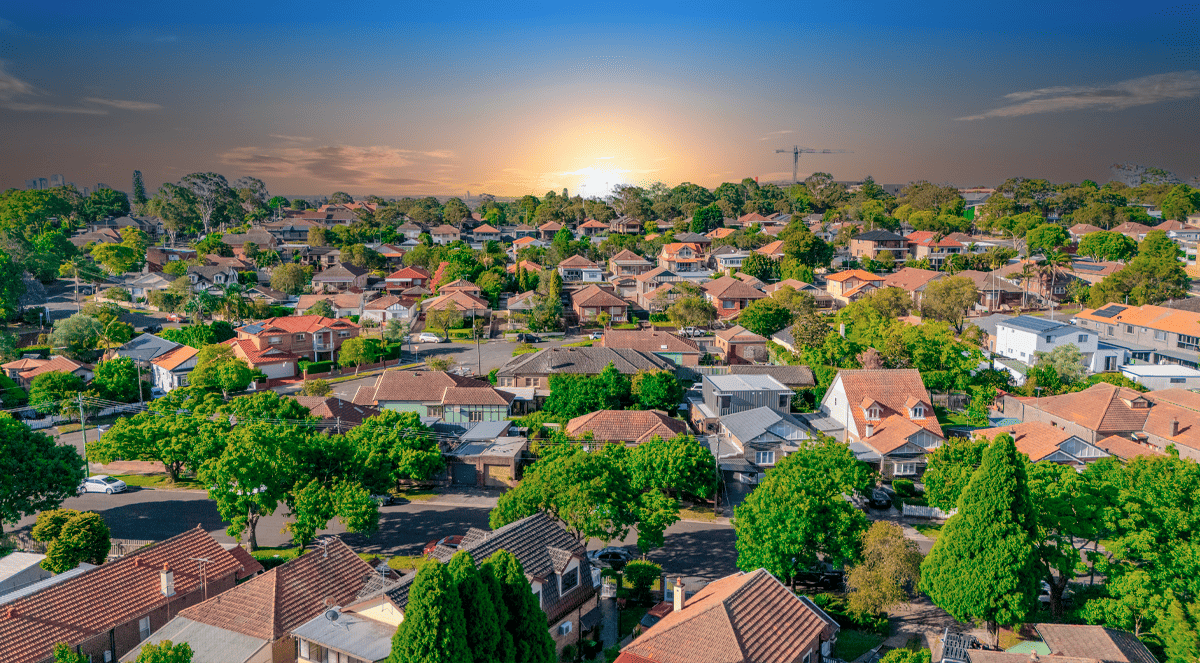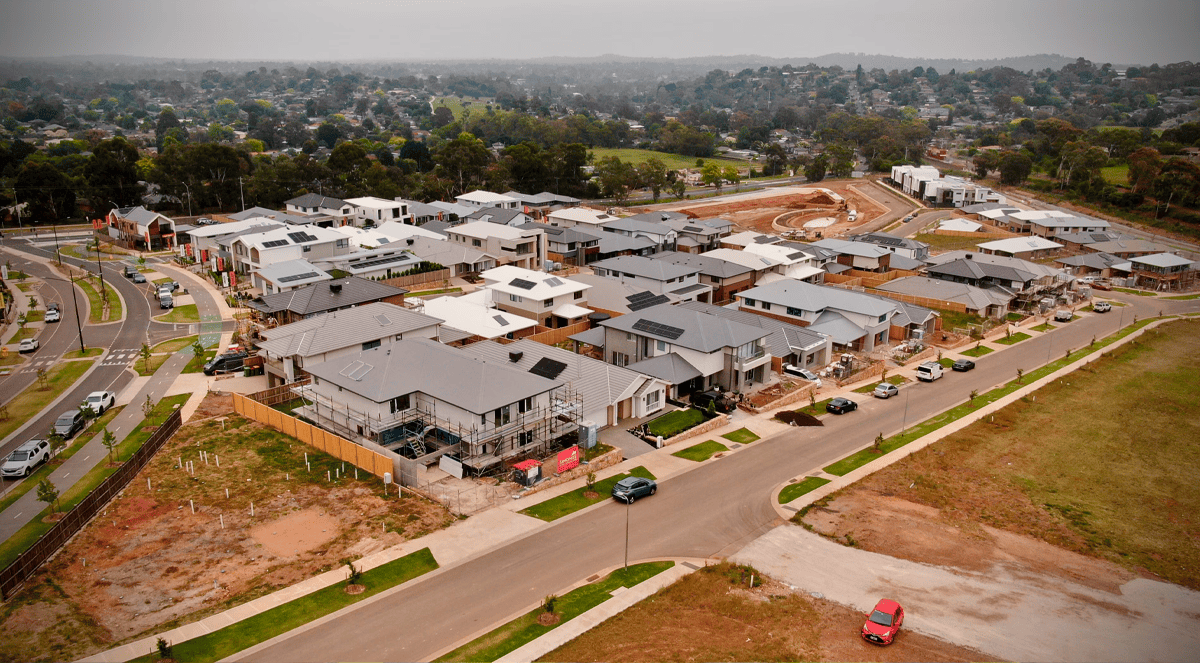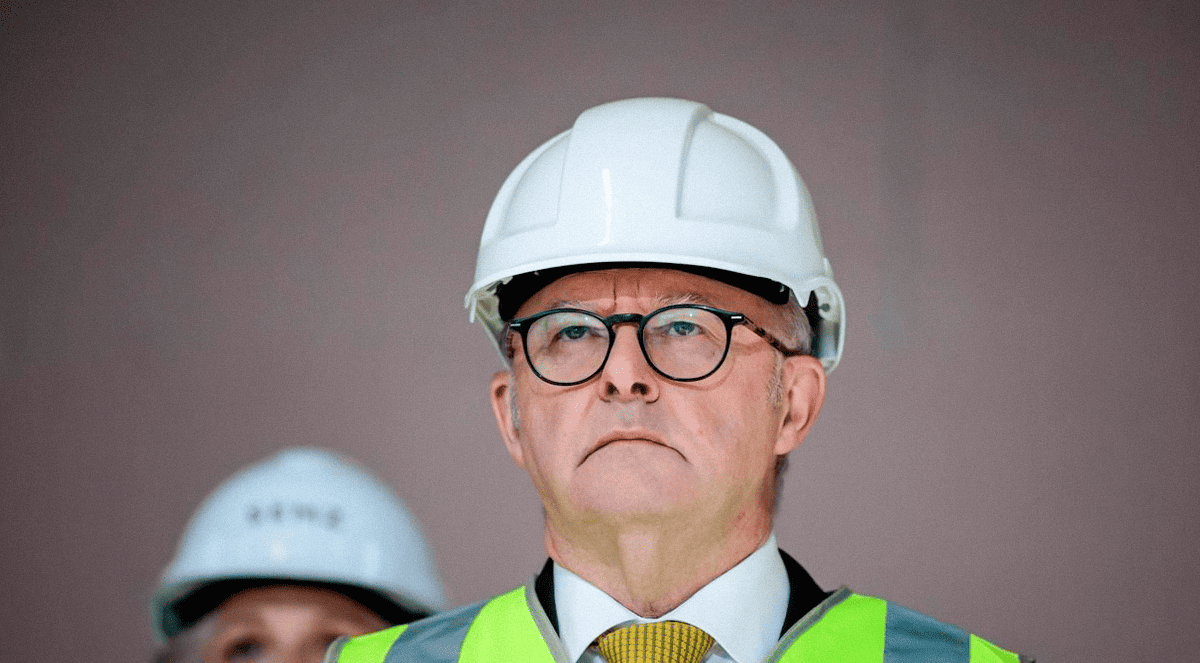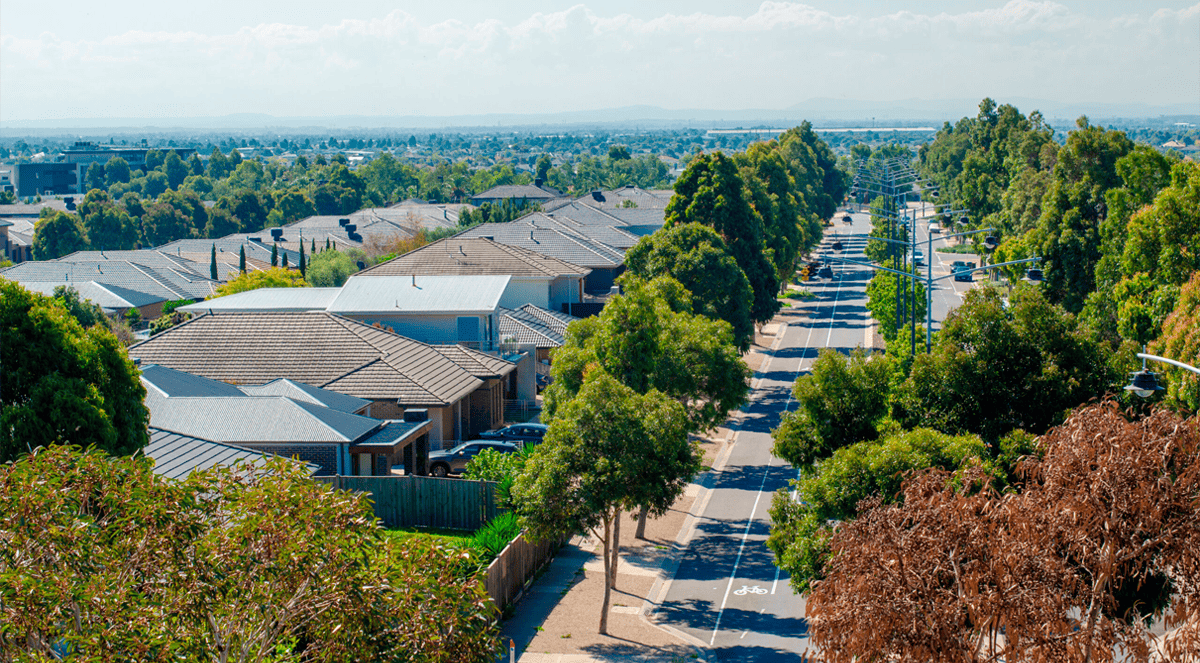Features > Property News & Insights > Market updates
New study confirms property is the path to financial freedom in Australia
.png)
Credit: Illustration by Alberto Ruggieri
KEY POINTS
- Research from the Melbourne Institute confirms that property ownership is a key factor in wealth accumulation in Australia
- The research shows property ownership is also a factor in the growing gap between middle-income and rich Australians
- A leading financial journalist and investor argues that property investment enforces discipline, reduces impulsiveness and provides long-term security
I’ve long argued that the surest way for Australians to achieve financial freedom is through residential property.
It’s a safe and secure investment class that has provided long-term steady returns.
A new study from some of the country’s top economic modellers has confirmed that property ownership is a leading determinant of whether an Australian is wealthy or not.
The research comes as a senior editor at one of the nation’s top financial market newsletters has penned a compelling piece, entitled “I’m sorry, but you need property to be rich”.
The details
Each month, data analytics firm CoreLogic publishes a chart pack looking at trends in residential property.
The first page of the chart pack always contains the infographic above - a breakdown of the current state of Australia’s wealth.
It also always shows the overwhelming bulk of the nation’s wealth is held in residential property - whether it be owner-occupied homes or investment properties.
As of February 2025, the amount of wealth held by Australians in residential property was 2.7 times the wealth held in superannuation and 3.36 times the amount held in Australian stocks.
A new research paper from the Melbourne Institute’s Centre for Applied Economic and Social Research helps confirm that property ownership is a key determinant of wealth in Australia.
The study, “Decomposing wealth inequality in Australia 2006 - 2018” used data from the Institute’s own long-running HILDA (Household, Income and Labour Dynamics in Australia) survey to look at the wealth of Australians in 2002 and then every 4 years after that through until 2018.
The authors found that low-wealth households saw their net wealth increase by around 82.9% to $28,000 over that 16-year time frame, a factor they put down largely to the impact of compulsory superannuation.
Middle-wealth households saw a lift of 52.7% to $520,300, while rich households increased their net wealth by 64.8% to $2,224,400.
The largest gap in wealth during those 16 years turned out to be the difference between middle-income and rich households, which blew out to 68.90%.
This evidence backs up anecdotal evidence that middle-class Australians are being “squeezed”.
To look at the factors behind this “disappearing middle”, as the authors of the study termed it, they looked at sources of wealth.
“The low-wealth households, on average, had zero property net wealth at every survey point across the 16 years, evidencing the difficulty in becoming property owners for lower-income households,” according to Harry Chemay, a superannuation and wealth consultant who examined the Melbourne Institute data.
“Middle-wealth households saw a lift in net property wealth from $221,279 to $290,000, a rise of 31.06%.
“High-wealth households, in contrast, saw net property wealth rise from $737,598 to $1,250,000 on average, a lift of 69.47%.”
“This ‘disappearing middle’ phenomenon appears to be exacerbated by ever-escalating residential property prices and the increasing debt burden carried by middle-income Australians to enter, and stay in, the property market,” Harry Chemay says.
The Melbourne Institute researchers say their study clearly shows that “decreasing homeownership appears to be particularly critical for addressing divergent wealth accumulation experiences.”
In other words, people who derive their wealth from residential property in Australia appear to be getting richer - at the expense of those who don’t own a home and who are increasingly locked out of the property market.
“I’m sorry, but you need property to be rich”

The Melbourne Institute research comes as Vishal Teckchandani has penned a provocative article for readers of Livewire Markets, the daily financial markets newsletter where he’s a senior editor.
Most days, the typical headlines on Livewire Markets will be something like “3 ASX growth stocks to watch as earnings hit a turning point” or “CSL, PME or REA: Which ASX stock will be the first to hit $500?”
However, Vishal Teckchandani recently went against the grain, with an opinion piece entitled “I’m sorry, but you need property to be rich”.
Mr Teckchandani freely admits returns can sometimes be better from other investment classes such as stocks and ETFs (exchange-traded funds), but he argues that investing in property “forces wealth-building discipline.”
“That’s why you need it (in your investment portfolio),” he says.
According to Vishal Teckchandani, the vast majority of Australians who have achieved millionaire, multi-millionaire and billionaire status, particularly by their 30s and 40s, did so by either owning a successful business or building a substantial real estate portfolio.
“One of the most common criticisms,” Vishal Teckchandani says, “is the cost of buying and holding property—stamp duty, agent fees, council rates, taxes, interest on debt, and ongoing maintenance.
“Then, of course, the fees paid upon sale.”
But he says critics overlook the fact that “stamp duty and capital improvements are added to the cost base, reducing capital gains tax upon sale,” while “holding costs, including interest, strata, council, insurance, etc., are all expenses you can deduct.
“Many investors fixate on the short-term costs of property while overlooking its enormous long-term rewards.”
Another criticism of property, Mr Teckchandani says, is that it’s a sub-par investment compared to shares, particularly in terms of returns and liquidity.
To test this out, Vishal Teckchandani considered a $200,000 investment in the share market, with $1,000 in monthly contributions over 20 years.
Assuming an extremely generous 12% annual total return before fees, he estimates this would be worth $2.79 million.
He pitted this against a $200,000 deposit on a $1 million property.
Assuming a low-side 5% annual capital growth, that property would be worth $2.65 million at the end of 20 years.
So, shares win, right?
“But there’s just one major problem,” Vishal Teckchandani says, “We don’t live in a perfect world where these numbers dictate the return patterns of all property and stock investments.
“The reality is:
- Not every property will give you a measly 5%.
- Not every stock or ETF will return a wonderful 12%.
- Not every investor is disciplined enough to stay the course.”
It’s this last point, which Mr Teckchandani calls the “harsh truth”.
“For better or worse, investors are fickle and emotional.
“That’s why the idea that anyone can religiously invest $1,000 per month into an S&P 500 ETF for 10, 20, or 30 years without panic-selling, hoarding cash, chasing fads, triggering margin calls or getting bored is pure fantasy.”
To hammer this point home, Vishal Teckchandani references research by Bloomberg and Betashares that shows that if investors had missed the 20 best trading days on the S&P/ASX 200 in the five years to the end of the 31st of July 2024, their annual returns would have been just 2.09% instead of 8.51%.
“Property, by its nature, forces discipline,” he says.
“Each loan repayment increases your equity” and he says “there’s no option to panic-sell at the click of a button.
“The bank wields power over you until the loan is repaid, preventing impulsive decisions.
“In a way, property's illiquidity protects investors from their worst enemy: themselves.”
Stay Up to Date
with the Latest Australian Property News, Insights & Education.




.png?width=292&height=292&name=Copy%20Link%20(1).png)
 SIGN UP FOR FREE NEWSLETTER
SIGN UP FOR FREE NEWSLETTER





.jpg?width=1920&height=1080&name=Warning%2c%20You%20Might%20Be%20Facing%20Higher%20Taxes%20Soon%20(1).jpg)





.png?width=1920&height=1080&name=Rate%20Drops%20Signal%20BIGGEST%20Property%20Boom%20in%20DECADES%20(1).png)

.jpg?width=1920&height=1080&name=Labor%20vs%20Liberal%20These%20Housing%20Policies%20Could%20Change%20the%20Property%20Market%20Forever%20(1).jpg)
.jpg?width=1920&height=1080&name=QLD%20Slashes%20Stamp%20Duty%20Big%20News%20for%20Investors%20%26%20Home%20Buyers%20(1).jpg)
.jpg?width=1920&height=1080&name=Trump%20Just%20Slapped%20Tariffs%20%E2%80%93%20Here%E2%80%99s%20What%20It%20Means%20for%20Australia%20(1).jpg)
.jpg?width=1920&height=1080&name=Federal%20Budget%202025%20More%20Debt%2c%20No%20Housing%20%E2%80%93%20Here%E2%80%99s%20What%20You%20Need%20to%20Know%20(1).jpg)
.jpg?width=1920&height=1080&name=Australias%20Housing%20Crisis%20is%20about%20to%20get%20MUCH%20Worse%20(New%20Data%20Warns).jpg)
%20(1).jpg?width=1920&height=1080&name=Australias%20RENTAL%20CRISIS%20Hits%20ROCK%20BOTTOM!%20(2025%20Update)%20(1).jpg)
%20(1).png?width=1920&height=1080&name=Is%20Adelaide%20Still%20a%20Good%20Property%20Investment%20(2025%20UPDATE)%20(1).png)
.jpg?width=1920&height=1080&name=RBA%20Shocks%20with%20Rate%20Cuts!%20What%E2%80%99s%20Next%20for%20Property%20Investors%20(1).jpg)
%20(1).jpg?width=1920&height=1080&name=I%20Predict%20The%20Feb%20Rate%20Cut%20(My%20Price%20Growth%20Prediction)%20(1).jpg)
.png?width=1920&height=1080&name=Why%20Property%20Prices%20Will%20Rise%20in%202025%20Market%20Predictions%20(1).png)
.jpg?width=1920&height=1080&name=Why%20Investors%20Are%20Choosing%20Apartments%20Over%20Houses%202%20(1).jpg)
.jpg?width=1920&height=1080&name=Why%20Rate%20Cuts%20Will%20Trigger%20A%20Property%20Boom%20(1).jpg)
.jpg?width=1920&height=1080&name=Retire%20On%202Million%20With%20One%20Property%20(Using%20SMSF).jpg)
.jpg?width=1920&height=1080&name=4%20Reasons%20Why%20You%20Should%20Invest%20in%20Melbourne%20Now%20(1).jpg)
%20(1).jpg?width=1920&height=1080&name=Old%20Property%20vs%20New%20Property%20(Facts%20and%20Figures%20Revealed)%20(1).jpg)
%20(1).jpg?width=1920&height=1080&name=Will%20The%20New%20QLD%20Govt%20Create%20a%20Property%20Boom%20or%20Bust%20(My%20Prediction)%20(1).jpg)
%20Scott%20Kuru%20(1).jpg?width=1920&height=1080&name=Inflation%20Hits%20Three-Year%20Low%20(Will%20RBA%20Cut%20Rates%20Soon)%20Scott%20Kuru%20(1).jpg)
.jpg?width=1920&height=1080&name=How%20to%20Buy%20Investment%20Property%20Through%20SMSF_%20The%20Ultimate%20Guide%20(1).jpg)
.jpg?width=1920&height=1080&name=Victoria%20Slashes%20Stamp%20Duty%20Melbourne%20Set%20to%20Boom%20Scott%20Kuru%20(1).jpg)
.png?width=1571&height=861&name=Are%20Foreign%20Buyers%20Really%20Driving%20Up%20Australian%20Property%20Prices%20(1).png)
.jpg?width=1920&height=1080&name=The%20Single%20Factor%20That%20Predicts%20Property%20Growth%20Regions%20(1).jpg)
%20Scott%20Kuru%20(1).jpg?width=1920&height=1080&name=My%20Prediction%20On%20Rates%20%26%20Negative%20Gearing%20(Market%20Crash)%20Scott%20Kuru%20(1).jpg)

-1.png?width=1920&height=1080&name=Major%20Banks%20Cut%20Rates%20Will%20RBA%20Follow%20Suit%20(Sept%20Rate%20Update)-1.png)
%20Scott%20Kuru-1.png?width=1920&height=1080&name=Rate%20Cut%20Coming%20What%20New%20Zealands%20Move%20Means%20for%20Australia%20(Sept%20Prediction)%20Scott%20Kuru-1.png)
%20(1).jpg?width=1920&height=1080&name=Buy%20when%20the%20interest%20rates%20are%20high!%20(Why%20you%20must%20buy%20now!)%20(1).jpg)
.jpg?width=1920&height=1080&name=Carms_Revised%20Taxes%20Due%20Aug%209%20YT%20Thumbnail02%20(1).jpg)
.jpg?width=1920&height=1080&name=Carms_Too%20Little%20Too%20Late%20Aug%207%20YT%20Thumbnail01%20(1).jpg)









.jpg?width=1920&height=1080&name=Carms_Rate%20Drop%20In%20July%20Jun%2010%20YT%20Thumbnail02%20(1).jpg)
.jpg?width=1920&height=1080&name=Carms_Own%20a%20Property%20V6%20Jun%205_YT%20Thumbnail%20(1).jpg)









.png?width=1920&height=1080&name=Artboard%201%20(3).png)






.jpg?width=1920&height=1080&name=YT%20thumbnail%20%20(1).jpg)

